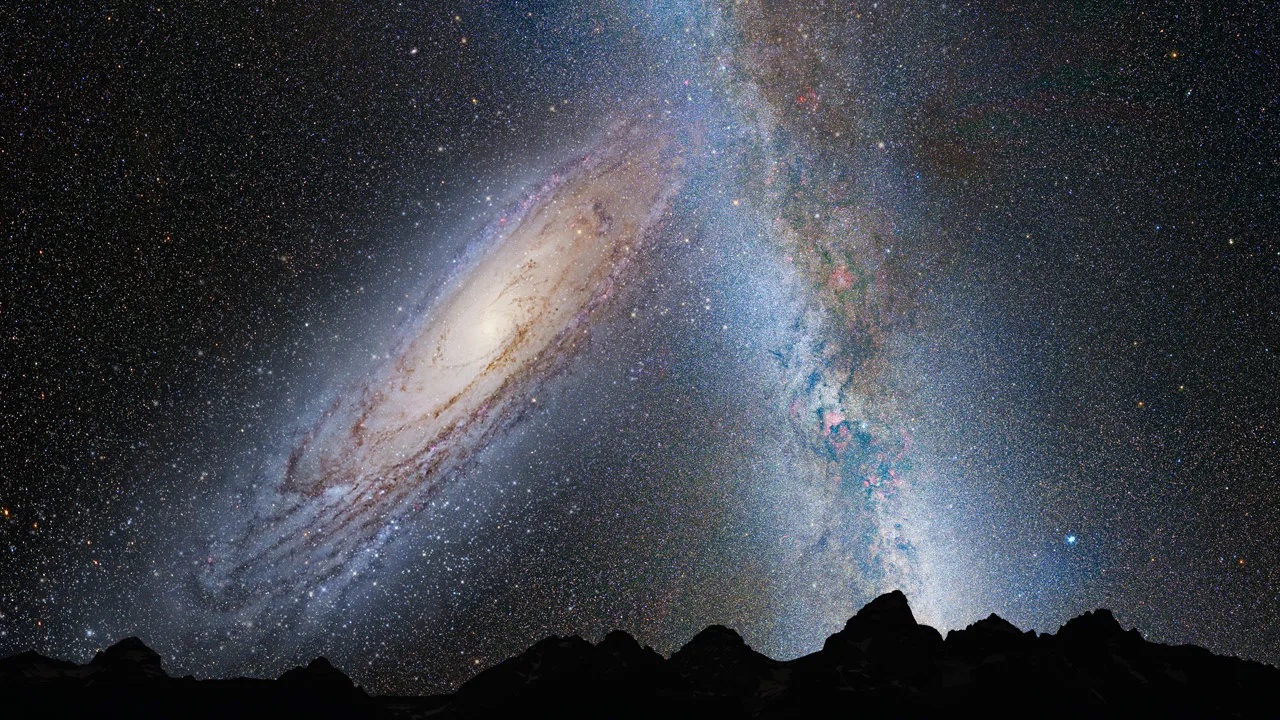I often drag out the amazing fact that the Andromeda Galaxy, that faint fuzzy blob just off the corner of the Square of Pegasus, is heading straight for us! Of course I continue to tell people it won’t happen for a few billion years yet but a recent study suggests that we are already seeing hypervelocity stars that have been ejected from Andromeda already. It is just possible that the two galaxies have already started to exchange stars long before they are expected to merge.
We tend to think of stars as stationery objects in the sky, except for their slow westward drift across the sky as the Earth rotates. The reality is different though, stars do move but due to the vast distances in interstellar space, that motion is largely not noticeable. There are exceptions such as Barnard’s star in the constellation Ophiuchus. This inconspicuous red dwarf star moves 10.39 seconds of arc each year (by comparison, the full Moon is 1,900 seconds or arc in diameter.)
Another type of star can be observed, hypervelocity stars (HVSs), and these are among the fastest objects in the Galaxy. They are defined as stars that have a velocity which is of the order 1,000 km per second and by comparison, the Earth travels through space at a velocity of around 30 km per second! The first was discovered in 2005 but since then a number of HVSs have been found, and some of them have the potential to escape from the Milky Way.
Typically the motion of stars is the result of their motion around the centre of a galaxy. Our own star the Sun, takes 220 million years to complete one orbit of the centre of the Milky Way. The origin of the HVSs high velocity is believed to stem from gravitational interactions between binary stars and black holes. The idea was proposed by Jack Gilbert Hills is a stellar dynamicist, born on 15 May 1943. In this process, a black hole (stellar or the supermassive black hole at Galactic centre) captures one of a binary star system while the other gets ejected at high velocity. Other theories include ejection of one of a binary star system when the other goes supernova or from galactic interactions.
To understand the interactions between the Milky Way and the Andromeda Galaxy the team (led by Lukas Gülzow from the Institute for Astrophysics in Germany) had to go through painstaking analyses. First they had to understand the relative motion fo the two galaxies, they then had to model the gravitational potential of the entire system – this is the total acceleration acting upon an object at any position in either of the galaxies at any time. Finally the team could generate simulations of stellar motion to model the HVSs trajectories.
The study calculated the trajectories of 18 million HVSs for two different scenarios taking into account the two galaxies having equal mass and the other with the Milky Way having about half the mass of the Andromeda Galaxy. The starting positions of the HVSs in the simulation were randomly generated around the centre of Andromeda. The ejection directions were random and the results showed that 0.013 and 0.011 percent of HSVs are now within a radius of 50kpc around the Milky Way centre.
The explored the velocity of HVSs on arrival with both galaxy mass simulations and found that many approximately retain their initial velocity. Interestingly due to the time taken for the journey, a significant proportion may well evolve off the main sequence during their journey. Some of the HVSs slow down sufficiently to be captured by the Milky Way.

The team mapped the simulated position of stars against the sky and ran the data against high velocity star positions from Gaia data (Release 3) and found the simulated position distribution consistent with the Gaia data. The study concludes that it is highly likely that HVSs from Andromeda could indeed migrate to the Milky Way. Whilst they are not expected in their thousands, they are expected to distribute equally around the Milky Way centre. It might even be possible to detect them based on stellar velocity and trajectories but further studies are now required to take that next step.
Source : On Stellar Migration from Andromeda to the Milky Way


Interesting, I wonder what it would be like if the solar system were ejected from the Milky Way as a HVS – plenty of time for the whole system to rise above the plane of the Milky Way – the view would be astounding…especially if the direction of travel were toward M31 so the view was clearer…
Not too surprising given that the two galaxy dark matter and baryon halos are starting to merge. [The paper quotes the Galactocentric rest frame distance to Andromeda as 600 kpc, and the Milky Way halo radius R_M,200 = 206 kpc – both virial radii are quoted as Rvir = 200 kpc.]
The surprising thing to me is the spread and density in the hypervelocity star ejection shell that have had time to reach Milky Way. The stars were mostly ejected from Andromeda between 13 to 10 Gyrs ago, and they are sufficiently many that they can possibly be detected among our own or surrounding dwarf galaxy contributions.